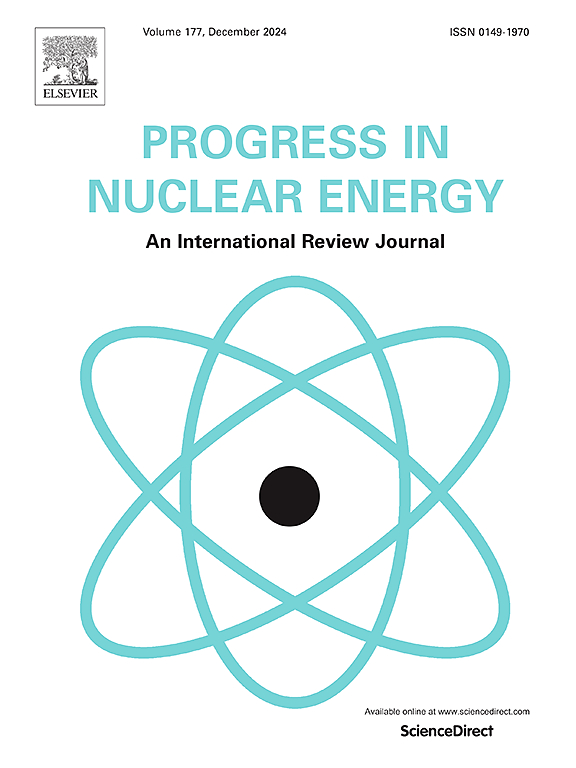Effect of tip injection on performance of high-load helium compressor cascade in high temperature gas-cooled reactor
IF 3.3
3区 工程技术
Q1 NUCLEAR SCIENCE & TECHNOLOGY
引用次数: 0
Abstract
The helium compressor's high-load design approach causes more significant tip-leakage and secondary flow in the passage. Tip injection can effectively restrain the growth of leakage vortex and improve the diffuser capacity of the cascade. In this paper, numerical simulation and wind tunnel experiment are employed to investigate the impact of tip injection on cascade aerodynamic performance in two aspects: axial deflection angles and pitch angles. Under the optimal combination of the injection angle, the effect of tip injection on the cascade performance at different relative positions of guide-rotor blades is investigated. The numerical results demonstrate that an appropriate axial deflection angle enables the leakage vortex with the high-energy fluid to fade on the pressure surface of the adjacent blade, thereby weakening its impact on the downstream flow field. A suitable pitch angle diminishes the strength of the passage vortex formed at the guide vane's trailing edge, which minimizes its mixing with the tip leakage vortex and leakage flow. The injected high-energy flow facilitates the dissipation of the vortex system. The experimental results indicate that tip injection has positive effects on different relative positions of guide-rotor blades, and Case-4 has the most significant improvement effect, with a loss rate of 8.22%.
求助全文
约1分钟内获得全文
求助全文
来源期刊

Progress in Nuclear Energy
工程技术-核科学技术
CiteScore
5.30
自引率
14.80%
发文量
331
审稿时长
3.5 months
期刊介绍:
Progress in Nuclear Energy is an international review journal covering all aspects of nuclear science and engineering. In keeping with the maturity of nuclear power, articles on safety, siting and environmental problems are encouraged, as are those associated with economics and fuel management. However, basic physics and engineering will remain an important aspect of the editorial policy. Articles published are either of a review nature or present new material in more depth. They are aimed at researchers and technically-oriented managers working in the nuclear energy field.
Please note the following:
1) PNE seeks high quality research papers which are medium to long in length. Short research papers should be submitted to the journal Annals in Nuclear Energy.
2) PNE reserves the right to reject papers which are based solely on routine application of computer codes used to produce reactor designs or explain existing reactor phenomena. Such papers, although worthy, are best left as laboratory reports whereas Progress in Nuclear Energy seeks papers of originality, which are archival in nature, in the fields of mathematical and experimental nuclear technology, including fission, fusion (blanket physics, radiation damage), safety, materials aspects, economics, etc.
3) Review papers, which may occasionally be invited, are particularly sought by the journal in these fields.
 求助内容:
求助内容: 应助结果提醒方式:
应助结果提醒方式:


